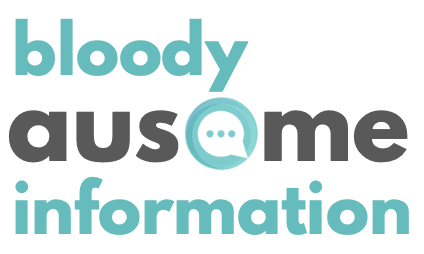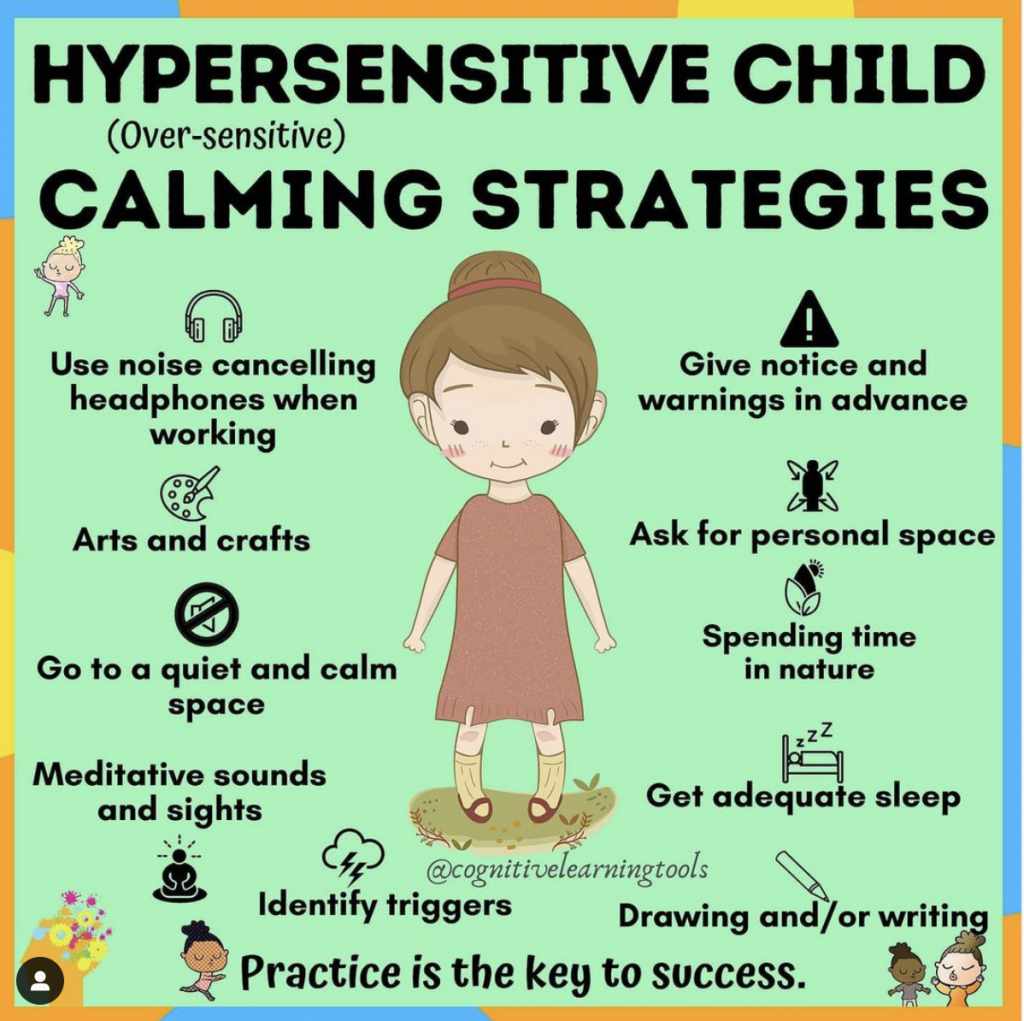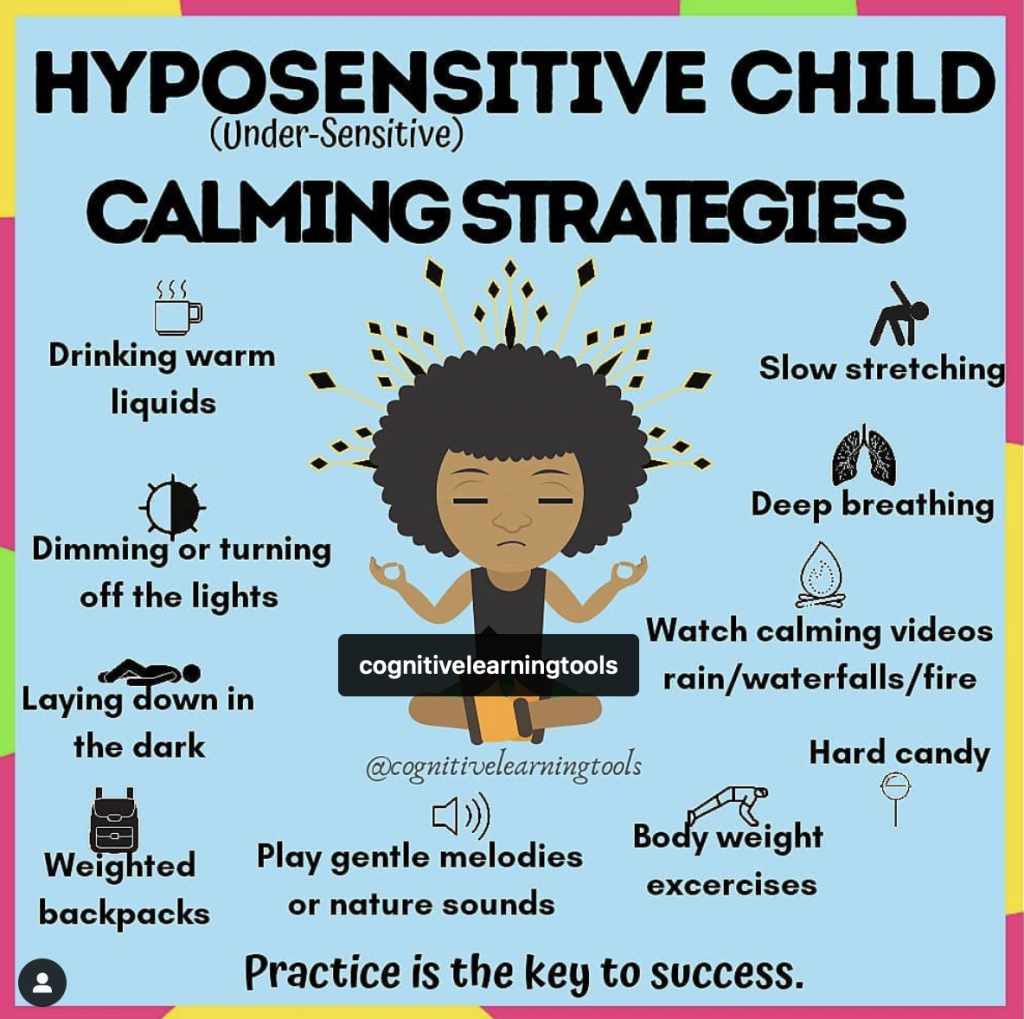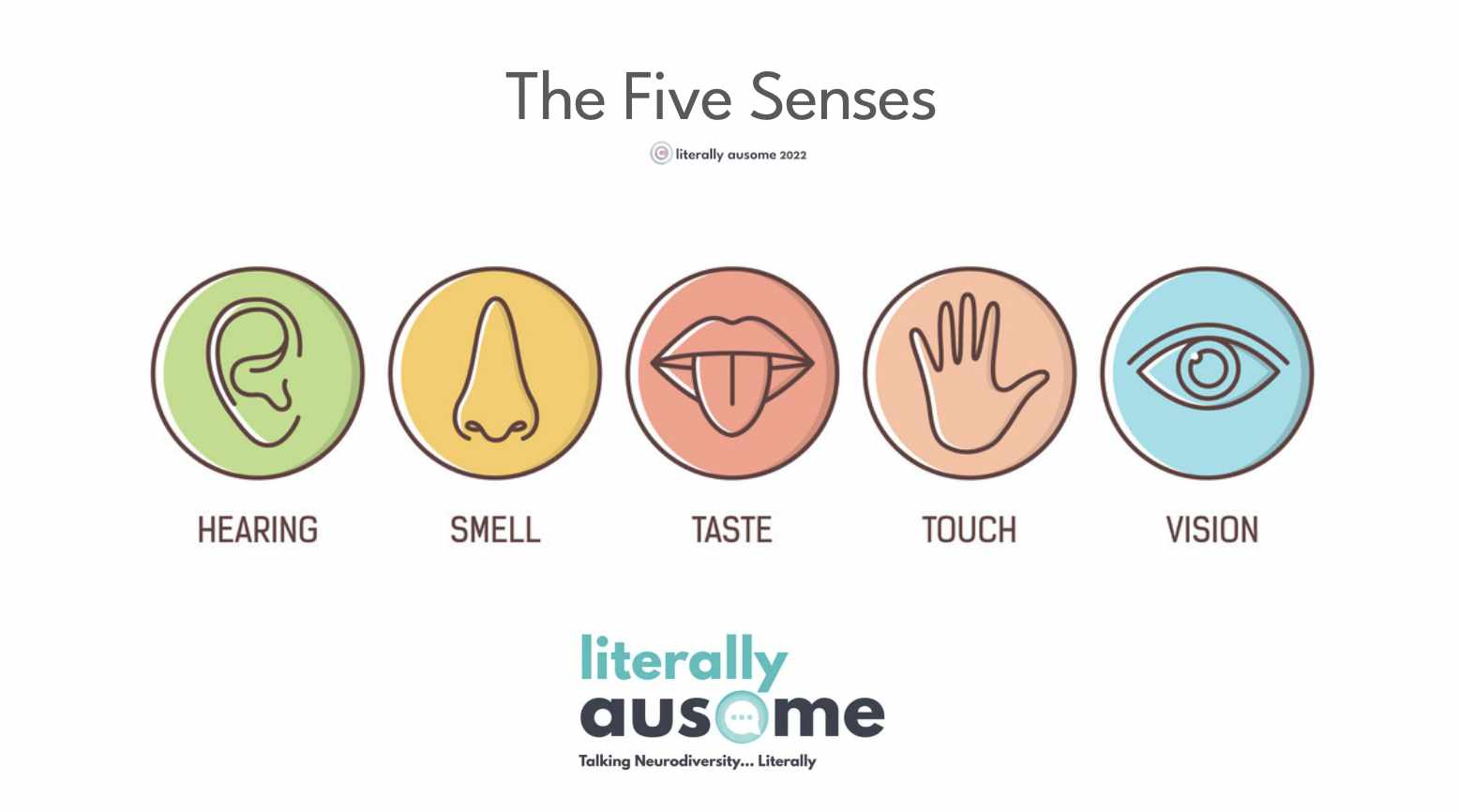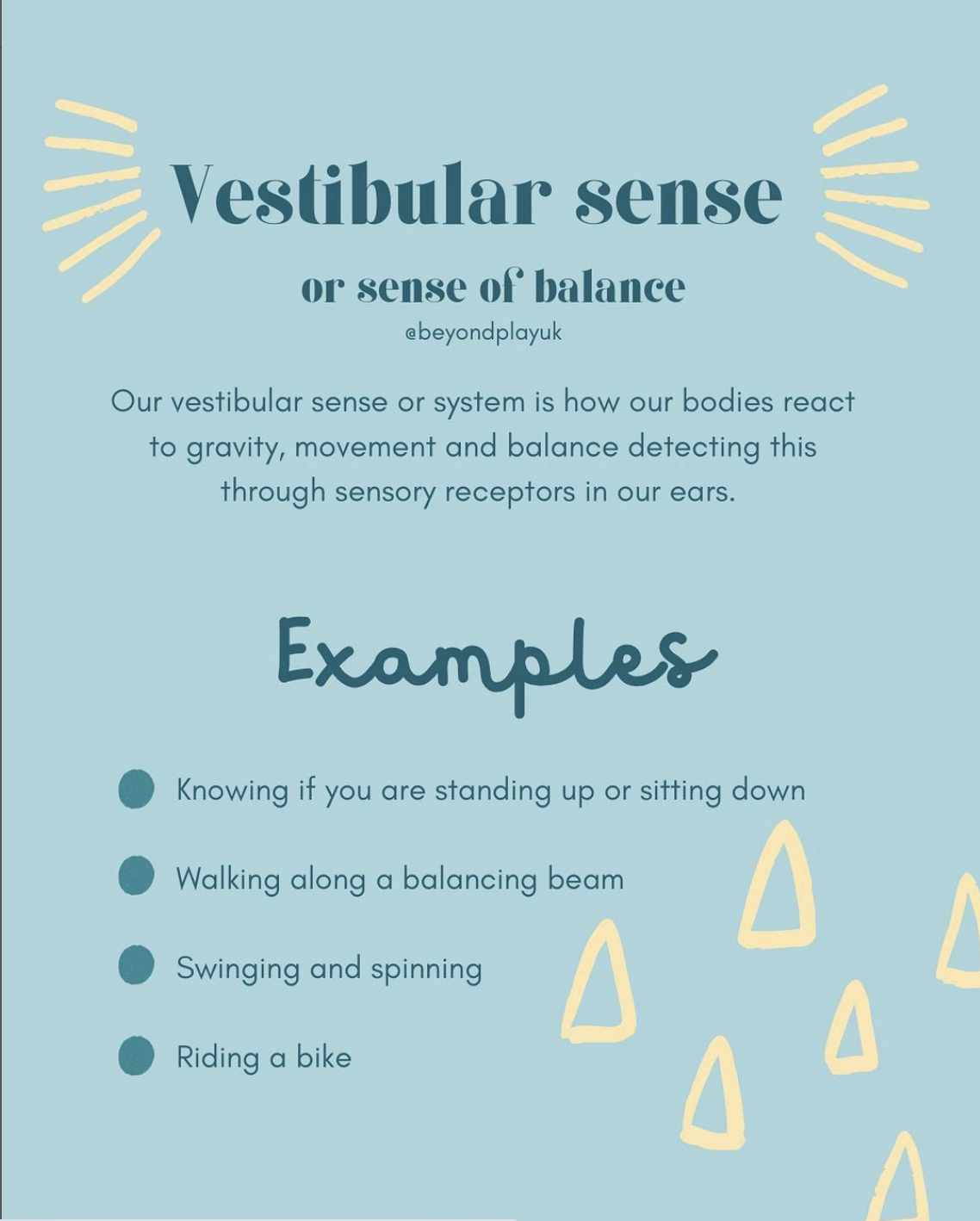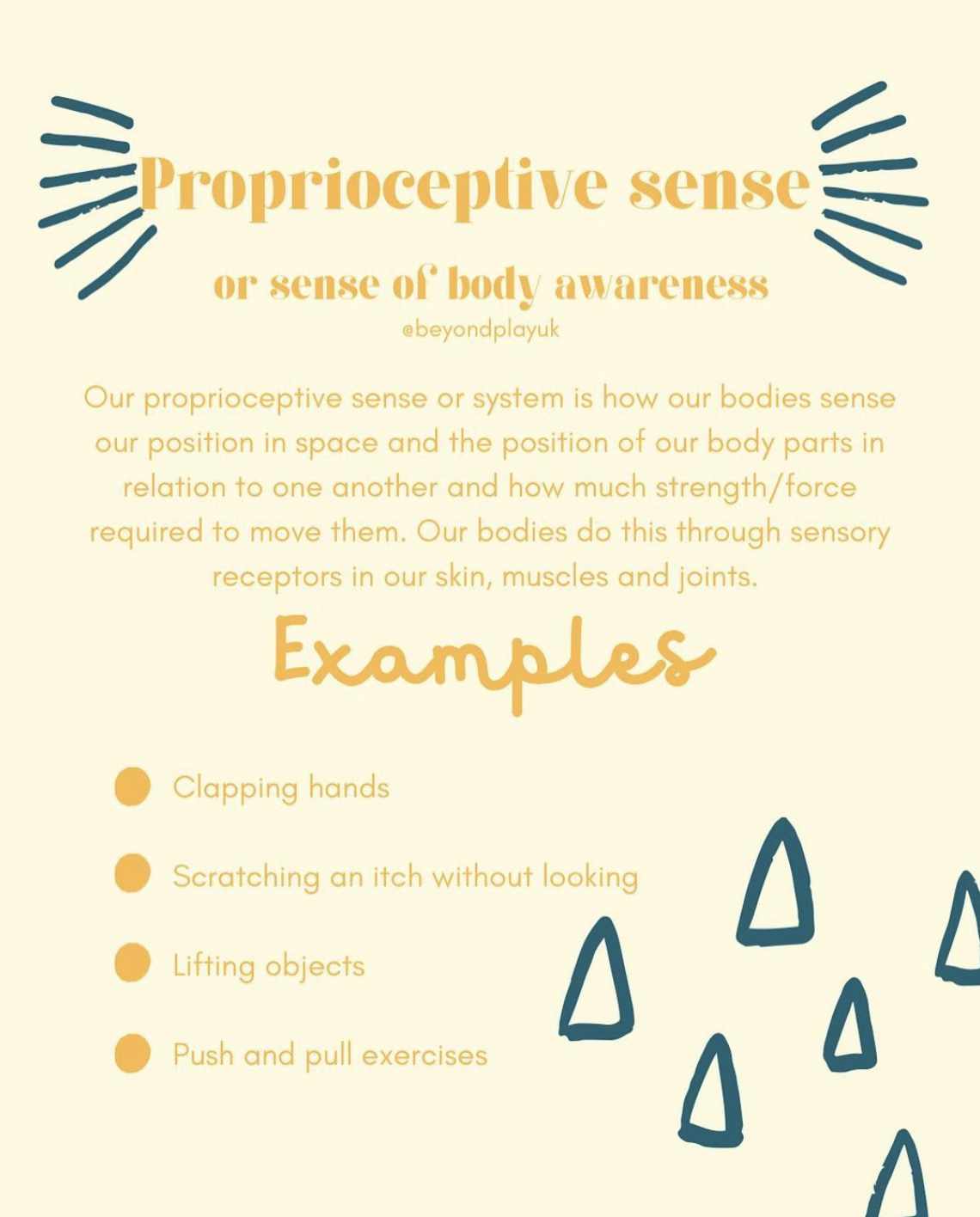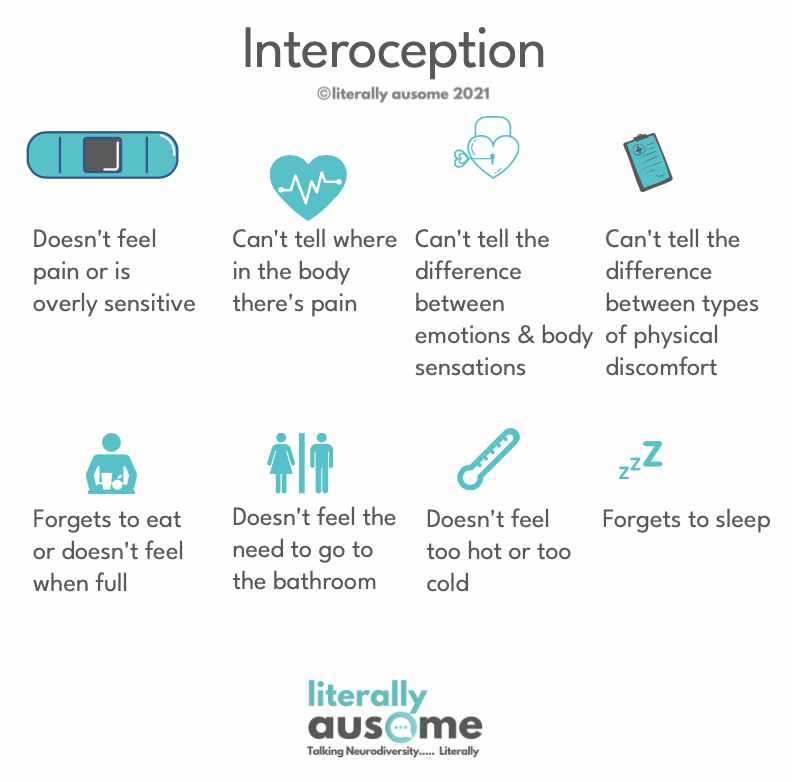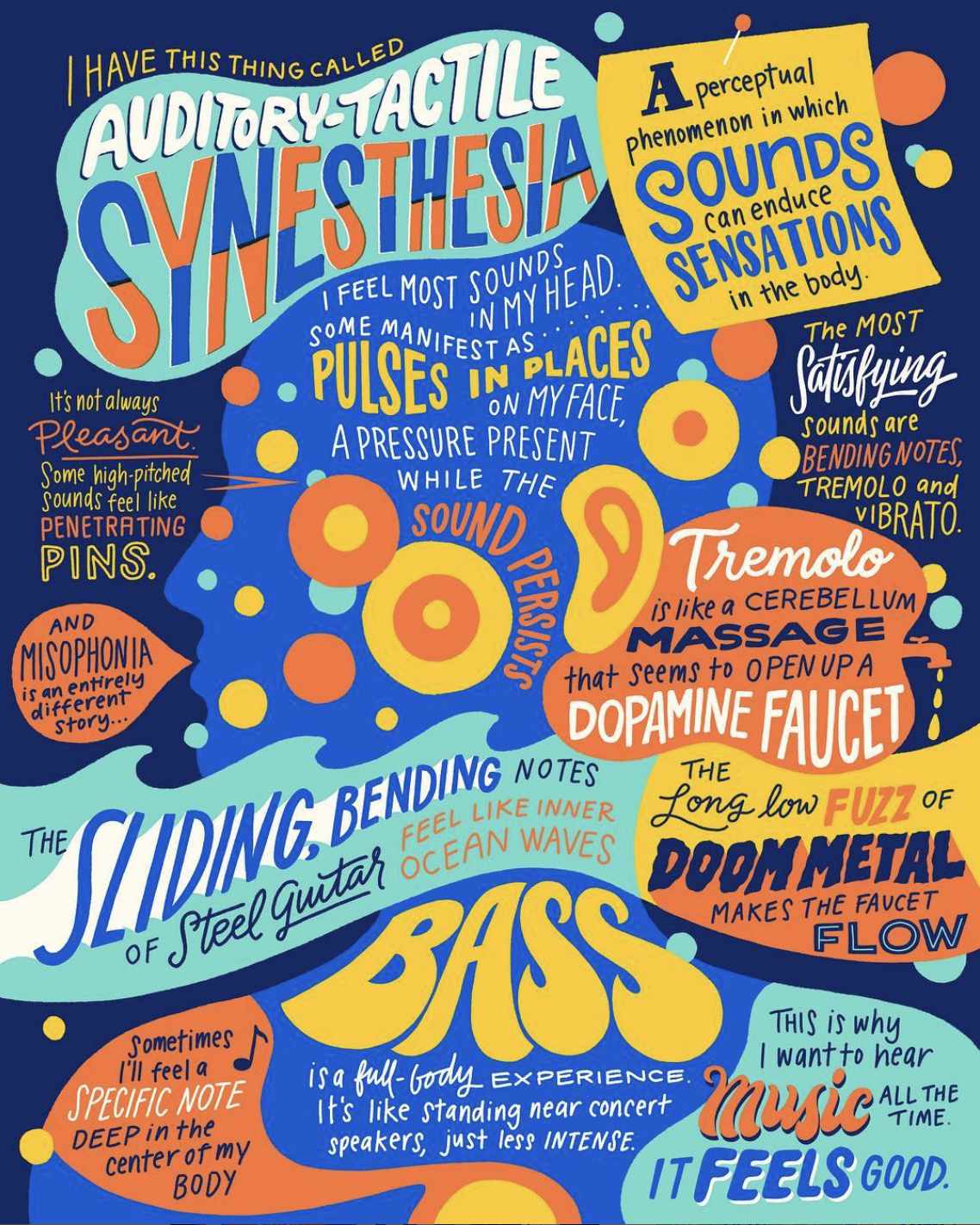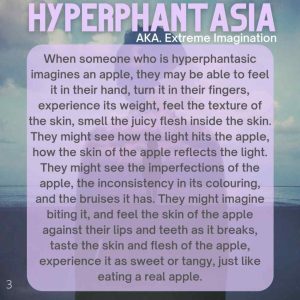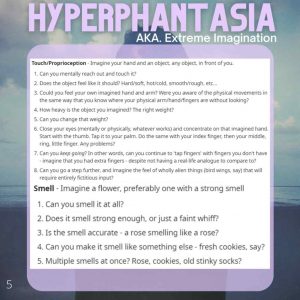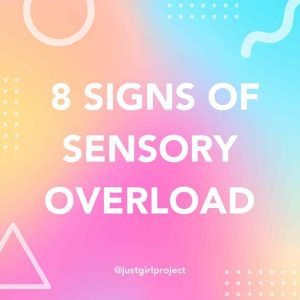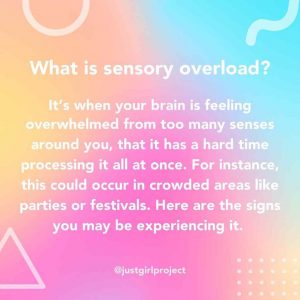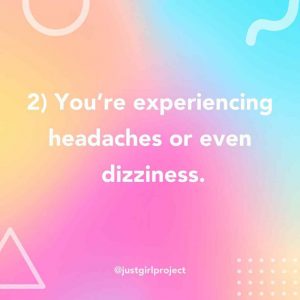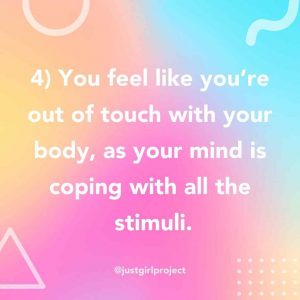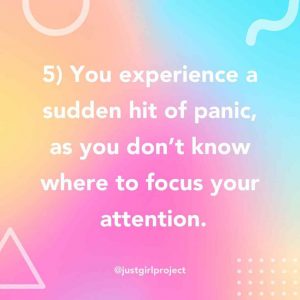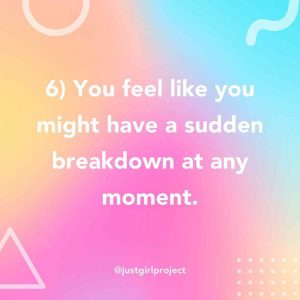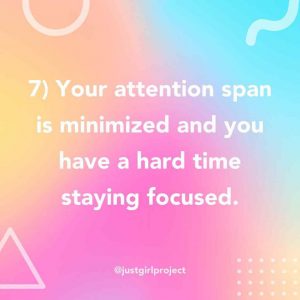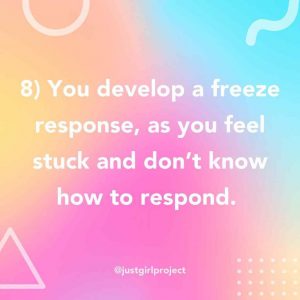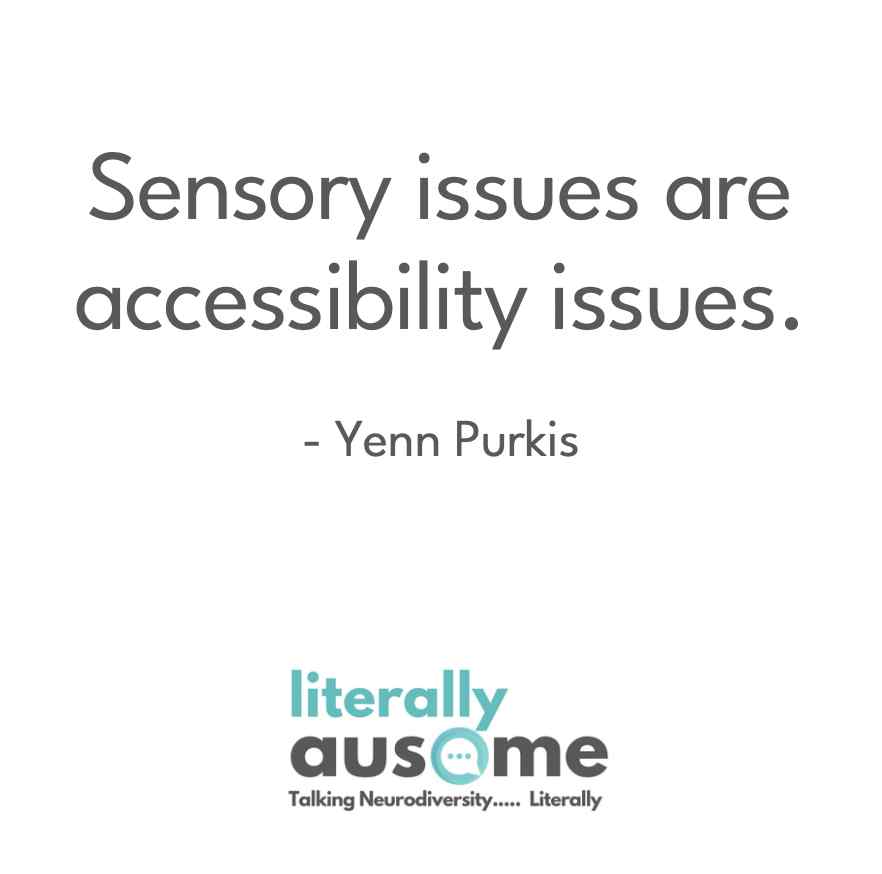Neurodiverse children and adults tend to also struggle with their 'Sensory Processing'. This can affect one or multiple senses like overreacting to sounds, clothing and food textures. The five most common senses are, sight (vision), hearing (auditory), smell (olfactory), taste (gustatory) and touch (tactile).
Alternatively, some children and adults under-react, or crave (hyporeactive) sensory stimuli which causes them to crave more intense thrill-seeking stimuli (hypersensitive), including jumping off tall things or swinging too high on the playground.
- Think clothing feels too scratchy or itchy
- Think lights seem too bright
- Think sounds seem too loud
- Think soft touches feel too hard
- Experience food textures make them gag
- Have poor balance or seem clumsy
- Are afraid to play on the swings
- React poorly to sudden movements, touches, loud noises or bright lights
- Have behaviour problems
Sometimes these symptoms are linked to poor motor skills as well, like a child having trouble holding a pencil or scissors (fine motor skills), or having trouble climbing stairs as a result of low or poor muscle tone (gross motor skills) and may also experience language delays.
In older children, these symptoms may cause low self-confidence, which can lead to social isolation and even depression.
- Can’t sit still
- Seek thrills (loves jumping, heights and spinning)
- Can spin without getting dizzy
- Don’t pick up on social cues
- Don’t recognise personal space
- Chew on things (including their hands and clothing)
- Seek visual stimulation (like electronics)
- Have problems sleeping
- Doesn't recognise when their face is dirty or their nose is running
Source: @cognitivelearningtools, 'Hypersensitive Child'
Source: @cognitivelearningtools, 'Hyposensitive Child'
Source: @cognitivelearningtools, 'Hyposensitive Child'
The Five Senses
Vision, Auditory, Olfactory, Gustatory and Tactile
The five most common senses are, sight (vision), hearing (auditory), smell (olfactory), taste (gustatory) and touch (tactile).
- Sound - includes being really sensitive to sounds and noises (even if it doesn’t seem noisy to others).
- Smells - For example, when particular foods are being prepared or cooked or they might walk really fast past butchers or fruit shops. It might also be certain perfumes (a teacher wears) which can be really overpowering and off-putting or even if a shop or office burns candles/oils that is nauseating.
- Vision - can be impacted by the fluorescent lights being too bright or too sunny outside.
- Touch - sensitivity refers to a person not liking to be touched by others and also includes clothing and fabrics which if too loose, tight, itchy or scratchy can be really irritating and be refused to be worn.
- Taste sensitivities - a person will avoid touching and/or eating certain foods because of their texture.
The Eighth Sense
Interoception
The eighth sense, 'interoception', refers to the brain messages throughout the body (in organs, muscles, skin, bones etc) that gathers information from inside the body and sends them to the brain. The brain then helps to make sense of these messages and urges us to take action; if we're thirsty, we get a drink; if we feel full, we stop eating; if we feel cold, we get a top; if we feel the need the bathroom, we go; if we feel anxious, we seek comfort; if we feel frustrated, we seek help.
Interoception also affects emotions and self-regulation by its inaccurate identification of the interoceptive signals is associated with skill in emotion processing, decision-making, self-regulation, empathy and theory of mind (the ability to understand that other people have thoughts and feelings). Because emotions feel different in the body, e.g. before speaking in public, your body may feel a certain way i.e. racing heart, tense and shaky muscles, shallow breathing and butterflies in your stomach, these feelings in connection to emotions (that let us know that we are feeling a bit nervous, worried or anxious) and when a person is unable to identify these feelings/sensations, it's, therefore, difficult to identify emotions clearly.
Interoception is also linked to other important skill areas including self-awareness, the flexibility of thought, problem-solving, social understanding, intuition and perspective-taking.
Hyperphantasia
Hyperphantasia is commonly understood as one's ability to explore the concept of imagination on extreme levels and represents the ability to form extremely vivid and sublime visual images.
Typically, individuals with hyper-imagination are able to construct imagery that is beyond detailed and brightly outlined - resulting in some individuals having the capability even to experience a 360-degree vision and view objects from opposite directions.
The capability to disassociate oneself from reality allows one to think deeply through and analyse life possibilities, predict some outcomes regarding specific decisions, and come up with multiple scenarios for particular events and daily situations.
Top 5 Hyperphantasia Tests
For some individuals, picturing familiar places, the route to work, or their own home is not as straightforward mind tasks as for people with hyper-imagination, so finding out which group a person belongs to is possible with one of the vivid imagination tests.
- Auditory test - Choosing a favourite song and trying to recreate it in your mind, even if it involves several instruments is a quick way to gauge how well you are able to visualise. If you can hear some instrument, vocals, can follow the tempo, or even imagine this song in another genre, you have probably passed one of the common hyperphantasia tests.
- Visual test - Close your eyes and imagine an apple. Think of this round shape, colour and smoothness. Do you see any defects on its surface? Do you see it red or green? Are there any tonal contrasts? Can you automatically create a clear mental image? Or maybe such visualisation practice seems impossible to you?
- Gustatory test - Imagine a fruit, for example, a mango. Can you imagine peeling/cutting it? Do you feel it taste? Can you imagine eating dried mangoes? What about mango ice cream?
- Spatial test - Bring to your imagination the design and interior of any familiar room. Are you able to construct a whole room in your mind at once? What is the lighting? Can you see small decorative elements? Is there carpet? What is the colour of the walls?
- Emotional test - Think about some important events in your life, such as getting a driver's license, wedding, and receiving the desired present. Can you feel that feeling of great enthusiasm? Do those memories give you a thrill? Or maybe, it no longer evokes any specific emotion and doesn’t resonate in your mind?
Supporting Sensory Processing Challenges
The impact of sensory hyper or hypo-sensitivities can range from being a little bit annoying to extremely offensive. For example, an Autistic person might not want to go to an event or make arrangements if they know they'll experience sensory overload, or they attend and participate but bring along some items to support their sensitivities, e.g. noise reduction headphones.
Occupational Therapy (OT)
An Occupational Therapist (OT) can assist with therapies such as Sensory integration therapy (SI) and/or a Sensory diet.
- Sensory integration therapy (SI) therapy uses fun activities in a controlled environment with the therapist. The child experiences stimuli without feeling overwhelmed and can therefore develop coping skills for dealing with that stimuli. Through this therapy, these coping skills can become a regular, everyday response to stimuli.
- A sensory diet will supplement other therapies which is a list of sensory activities for home and school designed to help your child stay focused and organised during the day. Like sensory integration therapy, a sensory diet is customised based on every child’s needs.
A sensory diet at school might include:
- A time every hour when the child could go for a 10-minute walk
- A time twice a day when the child could swing for 10 minutes
- Access to in-class headphones so the child can listen to music while working
- Access to fidget toys
- Access to a desk chair bungee cord, allowing the child a way to move their legs while sitting in the classroom

